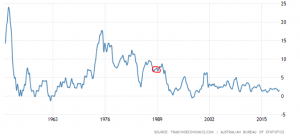Portfolio construction is a dynamic concept that should vary from person to person to match their investment preferences and goals. For the average Australian, most of their investment wealth will be held within superannuation that more often than not will be split primarily between stocks and bonds.
While this approach is brilliant for a fund manager who prioritises liquidity and diversification over nearly everything else, it doesn’t always match the goals of a retiree who need their money to last for decades.
In this article I explore an alternate view of portfolio construction that is designed to protect against longevity risk and long-term inflation as well as the more well-known issue of volatility.
First things first, there are only two things you can do with money, live in it (house) or live on it (retirement income). When we view the investment portfolio, this is what we call the “live on” bucket. A key requirement for “live on” wealth, is an income stream.
Capital Preservation
Not the same as a capital guarantee, it is closer to the difference between breaking a leg and losing a leg. One being permanent and the other being temporary.
The greater the level of volatility you allow into a portfolio and your life in retirement, the greater the exposure to sequencing risk and the greater the risk of capital loss.
Returns
There are two ways to be rewarded for accepting risk in a portfolio, income and growth.
Income is a less risky way of being rewarded than growth, something that is priced in by the ATO through the CGT discount you receive for holding assets more than 12 months. Income is cash, real and unambiguous.
Growth is intangible and can be taken away at any moment through a market crash or correction. Focussing on income does not remove the ability to “grow” a capital base as excess income can always be reinvested.
For those superannuation fund members in pension phase, the zero percent tax rate removes the value of the long-term CGT discount.
Inflation Protection
While inflation is on the low side today, retirement portfolios are being asked to last for longer and longer as life expectancy rises. As they continue to rise, inflation will become more and more important in the design of longer-term investment strategies.
The chart below highlights that today is not the first time in history that inflation has fallen to the low single digits and it also highlights that inflation can move quite rapidly.
The red circle shows the inflation starting point for someone who is in their 30th year of retirement today.

Inflation protection is all about protecting the value of income and capital against rising inflation. Typically, the best way to do this is via asset selection as some assets hedge better against inflation than others. Some of the better assets are; infrastructure, property and CPI linked annuities. Notoriously poor inflation hedge assets are; cash, TDs, fixed coupon bonds and stocks.
Importantly, we are much more comfortable with the notion of decreasing inflation on a CPI linked portfolio since even though the headline return may drop, you will still be able to buy the same things and lifestyle will not change. On a portfolio that has little to no inflation hedge where inflation rises, while investment returns may increase or stay flat, the buying power of your money will drop. Leaving two alternatives; consume capital or reduce lifestyle.
Simple Investments
The reason we prefer simple investment ideas is that we want to be able to understand the risk better. The more complex, the harder it is to assess risk. The harder it is to assess risk, the harder it is to protect against that risk.
A good example of this is owning property. Going in, you understand that if you lose your tenant, you lose your income.
Absolute Returns
It may sound obvious, but we want to make money every year.
Most managed funds have a “relative” return ethic, e.g. if the market falls by 30% we only try and fall by 20%. That may be ok for those who do not care for, or have no exposure to the sequence of returns (if they exist), but it is not a sound strategy for a retiree who has every dollar they have ever saved in.
The “absolute” return ethic is index-unaware and focusses on the receipt of regular and reliable cash flow coming in to meet living expenses.
In the current format, far too many advisers and money managers look at diversification as the be all and end all of risk mitigation. All it is, is one tool we have to reduce risk by holding assets with lower, or negative correlations, in the one portfolio in the hope that they don’t all go backwards at once. Unfortunately, the old strategy of splitting a portfolio across stocks and bonds until it matches a risk profile is an extremely one-dimensional view on how to build a tailored investment portfolio.







